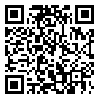Volume 9, Issue 37 (2012)
FSCT 2012, 9(37): 23-36 |
Back to browse issues page
Download citation:
BibTeX | RIS | EndNote | Medlars | ProCite | Reference Manager | RefWorks
Send citation to:



BibTeX | RIS | EndNote | Medlars | ProCite | Reference Manager | RefWorks
Send citation to:
A review on cold sanitization methods of milk. FSCT 2012; 9 (37) :23-36
URL: http://fsct.modares.ac.ir/article-7-1755-en.html
URL: http://fsct.modares.ac.ir/article-7-1755-en.html
Abstract: (6036 Views)
Thermal processing is the most common and traditional method to extend the shelf life of food. Because of negative effects of this processing method on sensory and nutritional properties of food, using of cold methods for sanitization has often been interesting substitutes for thermal treatment. High pressure, pulsed electric field, microfiltration, using of high pressure carbon dioxide and irradiation are such an important of the cold sanitization methods. High pressure processing inactivates microorganisms through deformation of their membrane, changing cell morphology, protein denaturation and inactivation of genetic mechanisms, disruption of ribosomes and denaturation of essential enzymes. Pulsed electric field treatment causes electroporation of the cell membrane wich results destruction of the microorganism. Microfiltration is based on the separation of microorganisms according to size differences with food components. High pressure carbon dioxide technique inactivates microorganisms through deformation of cell membrane, intercellular pH decrease, inactivation of essential enzymes, direct influence on metabolism, disordering of intracellular electrolyte balance, and removal of vital constituents from cell and cell membranes. Finally, irradiation inactivates microorganisms by causing some changes in biological systems. The benefits and defects of these mentioned methods have been investigated in this review paper and exhibited some examples for applications of each of them for sanitization of milk.
Keywords: Key words: Cold sanitization of milk, High pressure technology, Pulsed electric field, microfiltration, Irradiation
Received: 2010/07/19 | Accepted: 2011/12/19 | Published: 2012/12/18
| Rights and permissions | |
 |
This work is licensed under a Creative Commons Attribution-NonCommercial 4.0 International License. |





